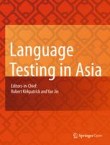Short reports are suitable for the presentation of research that extends previously published research, including the reporting of additional data and confirmatory results in other settings, as well as small-scale studies. Authors must clearly acknowledge any work upon which they are building, both published and unpublished.
Language Testing in Asia strongly encourages that all datasets on which the conclusions of the paper rely should be available to readers. We encourage authors to ensure that their datasets are either deposited in publicly available repositories (where available and appropriate) or presented in the main manuscript or additional supporting files whenever possible. Please see Springer Nature’s information on recommended repositories.
Authors who need help depositing and curating data may wish to consider uploading their data to Springer Nature’s Research Data Support or contacting our Research Data Support Helpdesk.
Springer Nature’s Research Data Support provides data deposition and curation to help authors follow good practice in sharing and archiving of research data, and can be accessed via an online form. The services provide secure and private submission of data files, which are curated and managed by the Springer Nature Research Data team for public release, in agreement with the submitting author. These services are provided in partnership with figshare. Checks are carried out as part of a submission screening process to ensure that researchers who should use a specific community-endorsed repository are advised of the best option for sharing and archiving their data.
Use of Research Data Support is optional and does not imply or guarantee that a manuscript will be accepted.
Abstract
The Abstract of the manuscript should not exceed 350 words and must be structured into separate sections:
- Background, the context and purpose of the study;
- Findings, the main results;
- Conclusions, brief summary and potential implications.
Please minimize the use of abbreviations and do not cite references in the abstract.
